Gum Disease Treatment – Santa Clarita, CA
Treating Bleeding Gums with Effective Therapy
Gum disease is a common oral health problem that millions of Americans suffer from. While many are unaware of their symptoms or neglect to see the urgency of their situation, others recognize that bleeding, tender, and swollen gums are serious problems. At A New Smile Dental Canyon Country, our team is here to deliver effective gum disease treatment in Santa Clarita so that bone and tooth loss do not become a reality. Call us today if you suspect you may be suffering from gingivitis or advanced gum disease.
Why Choose A New Smile Canyon Country for Gum Disease Treatment?
- State-of-the-Art Dental Technology Used
- Bacterial Reduction with Perio Protect Trays
- Convenient Care in One Location
What is Gum Disease?
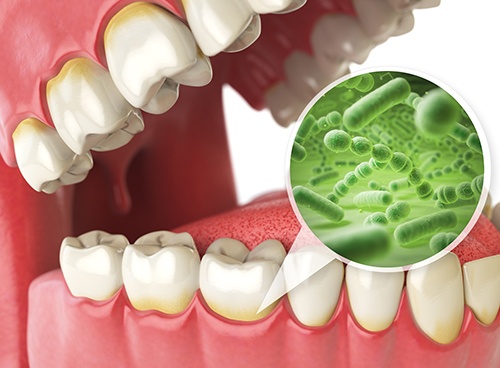
By the name, you may think gum disease only affects your gum tissue, but it is an inflammatory infection that can have a widespread negative impact throughout the body. It is caused by the bacteria found in plaque, the white, sticky substance that forms on unclean teeth, especially around the gumline. These bacteria irritate the gum tissue, causing bleeding, redness, and swelling. If allowed to persist, these bacteria can enter the bloodstream and worsen inflammations elsewhere in the body, increasing your risk of heart disease, diabetes, Alzheimer’s, kidney disease, certain kinds of cancer, and much more.
Symptoms of Gum Disease
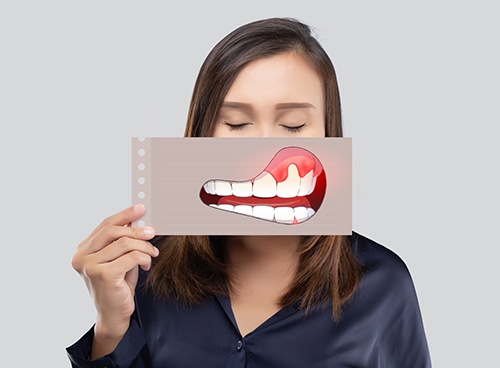
In its earliest stage, gum disease shows up as red, swollen gums that bleed easily. In fact, you may see blood in the sink as you brush or floss your teeth. As the infection advances, gums will recede and pull away from the teeth, which reveals more tooth surface, including the root. The extra gum tissue can then trap more plaque and bacteria in deep pockets, allowing the bacteria access to the jawbone, which will start to deteriorate as a result of the infection. Without intervention, the bone tissue will continue to weaken, making teeth unstable or loose, eventually leading to loss.
How Do We Treat Gum Disease?
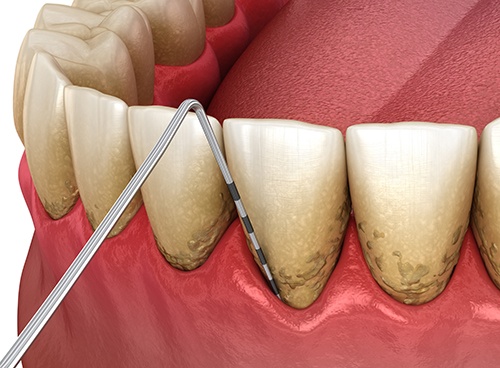
Our team takes advantage of several methods to eradicate bacteria and plaque because we believe in customizing treatment to your individual needs. You may require a combination of the following procedures, and they may need to be repeated over the course of several months to ensure long-term recovery. When you meet with your dentist, we can determine which treatments would best help you achieve a healthy smile again.
Scaling & Root Planing
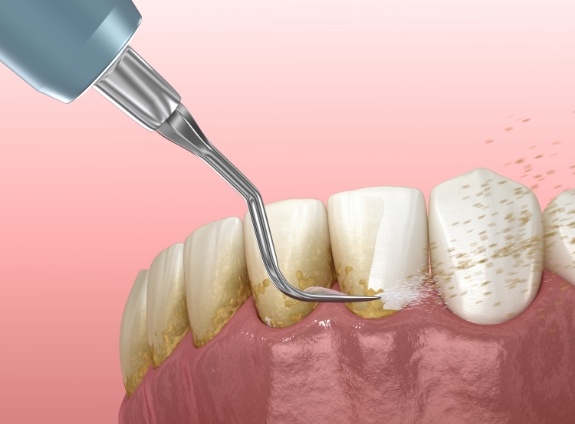
Scaling and root planing is a two-part process used to curb gum disease and improve symptoms of bleeding, swelling, and gum pocket formation. The first step is to clear away any plaque and tartar buildup around the base of your teeth and below the gumline (scaling). Then, the second step (root planing) is to smooth the tooth roots so that gum tissues will reattach, and the chance of bacterial accumulation reduces.
Antibiotic Treatment

Another solution that many dentists use to treat gum disease is antibiotic therapy with Arestin. Designed to fight off the potential of an infection, the medication is placed within the gum pockets, where it will slowly release over several weeks. As a result, it eliminates bacteria and helps the tissues to repair themselves while bonding with the tooth roots.
Perio Protect
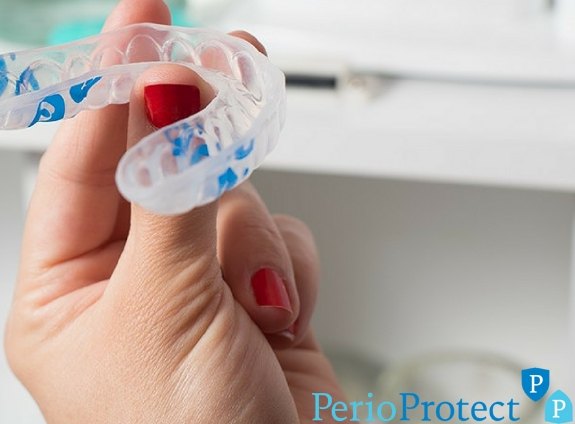
To further treat gum disease at home, our team is pleased to offer a solution that many dentists do not – Perio Protect. This comprehensive way to treat periodontal disease uses clear trays and a specialized medication that is designed to fight off infections. You simply apply the medication to the tray and wear it for a few minutes each day. The medicine then spreads into the gum pockets to treat areas of the infected tissue that cannot be reached or cleaned with regular oral healthcare products.
 Presione Aqui
Presione Aqui